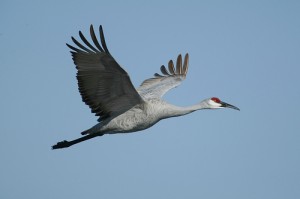We have much more to do and your continued support is needed now more than ever.
New Keystone XL Route – Same Risks, Same Threats
Building a 1,700-mile pipeline tocarry up to 800,000 barrels a day of thick, tar-like crude oil through the middle of America will rip up Canada’s boreal forest, leave toxic sludge ponds behind, disrupt pristine ecosystems and threaten every area along its path.
For now, the President and the U.S. Senate have rejected this scheme, though President Obama has openly invited pipeline builder TransCanada to submit a new proposal. TransCanada took a big step in that direction this week, by announcing a new route. Why? Nebraskans deemed the old route too environmentally risky to sensitive habitat. Well the new route appears no better. It still crosses the Nebraska Sandhills, and it still crosses the Ogallala Aquifer.

The Unique Sandhills and the Ogallala
Many experts have cautioned against locating the pipeline through Nebraska’s Sandhills and the Ogallala aquifer, from ranchers to university professors.
The Nebraska sandhills are the largest dune formation in the United States. The pipeline could splice right through this unique habitat of sand dunes, grasslands, wetlands and groundwater-fed lakes. There are over 1,000 plant and animal species in this region. The sandhills and especially central Nebraska are critical stopover points for millions of migrating birds in the spring, notably sandhill cranes.
The proposed pipeline’s route also cuts through the Ogallala aquifer, a geologic formation 174,000 square miles in size, larger than the state of California and spanning the states of Nebraska, South Dakota, Wyoming, Colorado, Kansas, Oklahoma, Texas and New Mexico. The Ogallala provides drinking water for millions of people and around 30 percent of the groundwater used for irrigation nationwide. Irrigated agriculture is critical to the economy of many communities that draw from the Ogallala. “The Ogallala Aquifer, whose total water storage is about equal to that of Lake Huron in the Midwest, is the single most important source of water in the High Plains region, providing nearly all the water for residential, industrial, and agricultural use,” reports the Water Encyclopedia.
Pipelines break; pipelines leak. TransCanada predicted that the Keystone XL pipeline would have 11 spills over the next 50 years, but University of Nebraska professor John Stansbury puts the estimate at eight times that, 91 over 50 years. He should know. He is a professor of environmental and water resources engineering. TransCanada’s Keystone One pipeline had 14 spills in its first year alone, a disheartening fact.
Our Water in the Crosshairs
Of particularly concern are the largely unknown consequences of oil seeping into the Ogallala. In a June 2011 letter, University of Nebraska professors John Gates and Wayne Woldt wrote Secretary of State Hillary Clinton that little is known about how an oil plume would behave in the sandhills and the Ogallala, that there is only one study of long-term plume hydrogeochemistry and that the conditions of that spill’s location, in Minnesota, are not comparable to the conditions of the sandhills.
The Ogallala lies under permeable layers of sand, gravel and rock, a type of soil mixture that absorbs water like a sponge, conditions make the area particularly vulnerable to oil leaks and spills because water can move quickly through this soil. “All the conditions are right for producing potentially very short lag times between an oil release near the surface of the earth and water contamination in the aquifer below,” John Gates, assistant professor of earth and atmospheric sciences, University of Nebraska, has warned.
The Keystone XL pipeline will not bring us energy security or international security. And equally important, it will not provide us economic or environmental security. Americans take the risks, and oil companies get rich. It’s a sucker’s deal and we should reject it.
You can help! Take action now to protect wildlife like Sandhill Cranes, wolves and others that are in harm’s path from tar sands.





















